Small-Scale Development: The Hidden Engine of Urban Core Revitalization
When we think of urban revitalization, it’s easy to focus on large-scale developments—towering skyscrapers, billion-dollar infrastructure projects, and major corporate investments. But the true heartbeat of community-driven transformation often lies in something much smaller: small-scale development.
Across cities, particularly within their urban cores, small-scale developers are leading the charge in revitalization. These projects—ranging from multi-family infill housing to adaptive reuse of underutilized buildings—create vibrancy, preserve neighborhood character, and support long-term economic resilience.
What is Small-Scale Development
Small-scale development refers to locally-driven, human-scale real estate projects that fill gaps in the built environment while maintaining the integrity of existing neighborhoods. Unlike corporate mega-developments, these projects typically:
Focus on underutilized or vacant lots within urban cores.
Range in size from duplexes and small apartment buildings to mixed-use storefronts and small commercial hubs.
Are led by local entrepreneurs, community investors, and independent developers rather than large institutional firms.
Prioritize incremental, sustainable growth over rapid, disruptive expansion.
Why Small-Scale Development Matters for Urban Revitalization
Preserves Neighborhood Character
In many cities, large-scale projects risk displacing long-term residents and erasing the cultural identity of communities. Small-scale development instead works within the existing fabric of a neighborhood, repurposing vacant spaces and adapting them for modern needs while maintaining their historical and architectural integrity.
🔹 Example: The transformation of Houston’s Third Ward, where small developers are rehabilitating homes and storefronts while ensuring long-time residents remain part of the growth story.
Supports Local Economic Growth
Instead of funneling capital into mega-projects that primarily benefit outside investors, small-scale development keeps wealth circulating within the community.
Encourages local ownership of property and businesses.
Boosts job creation by supporting small contractors, architects, and tradespeople.
Creates spaces for local entrepreneurs, such as coffee shops, co-working spaces, and community hubs.
🔹 Example: Small mixed-use developments in urban cores can provide affordable commercial space for minority-owned businesses and first-time entrepreneurs.
Enhances Housing Affordability & Density
Most institutions see affordability solely as a means of serving low income households rather than a function and tool to support and stimulate a. healthy supply of a variety of housing.
While large developments often focus on luxury housing, small-scale projects can incrementally add much-needed affordable housing in urban cores without overwhelming existing infrastructure.
Supports gentle density, like ADUs (Accessory Dwelling Units), duplexes, and small apartment buildings.
Makes homeownership more accessible by providing smaller, more affordable units.
Prevents drastic neighborhood overhauls, allowing for organic growth rather than displacement-driven gentrification.
🔹 Example: In cities like Minneapolis and Austin, zoning changes to allow “missing middle” housing (small multi-family projects) have helped address affordability crises.
Strengthens Community Engagement & Stewardship
Small developers are typically deeply invested in the neighborhoods where they build. Many live in the communities they develop, fostering a sense of responsibility and collaboration that corporate developers often lack.
Projects are often informed by community needs rather than speculative market trends.
Development decisions prioritize walkability, green space, and local input.
Residents feel empowered when they see growth benefiting them directly.
🔹 Example: In cities like Detroit and Atlanta, small-scale developers are partnering with neighborhood associations to ensure revitalization efforts align with community priorities.
What’s Next in Small-Scale Development?As cities continue to evolve, small-scale development will be a key driver in creating inclusive, economically sustainable, and vibrant urban cores. To unlock its full potential, stakeholders—including municipal leaders, lenders, urban planners, and community organizations—must work together to support independent developers in overcoming barriers.
An ideal future would involve large agencies and organizations leading from behind; supporting small-scale developers instead of the other way around. You don’t have to be a developer or development focused to be a part of movement. Everyone knows someone that can sponsor an initiative or program, advocate for policies and initiatives that benefit the community at large, or even invest directly as a community.
For the fourth year in a row, our office did just that, supporting small-scale development as a sponsor for Lost Spaces, Houston’s only conference dedicated to missing middle.
Want to see us in action and be part of the movement? Check out the Lost Spaces Conference Recap! This year’s conference explored real solutions for small-scale development and community-driven urban revitalization, and set the stage for future collaborations, partnerships and tools for developers.
